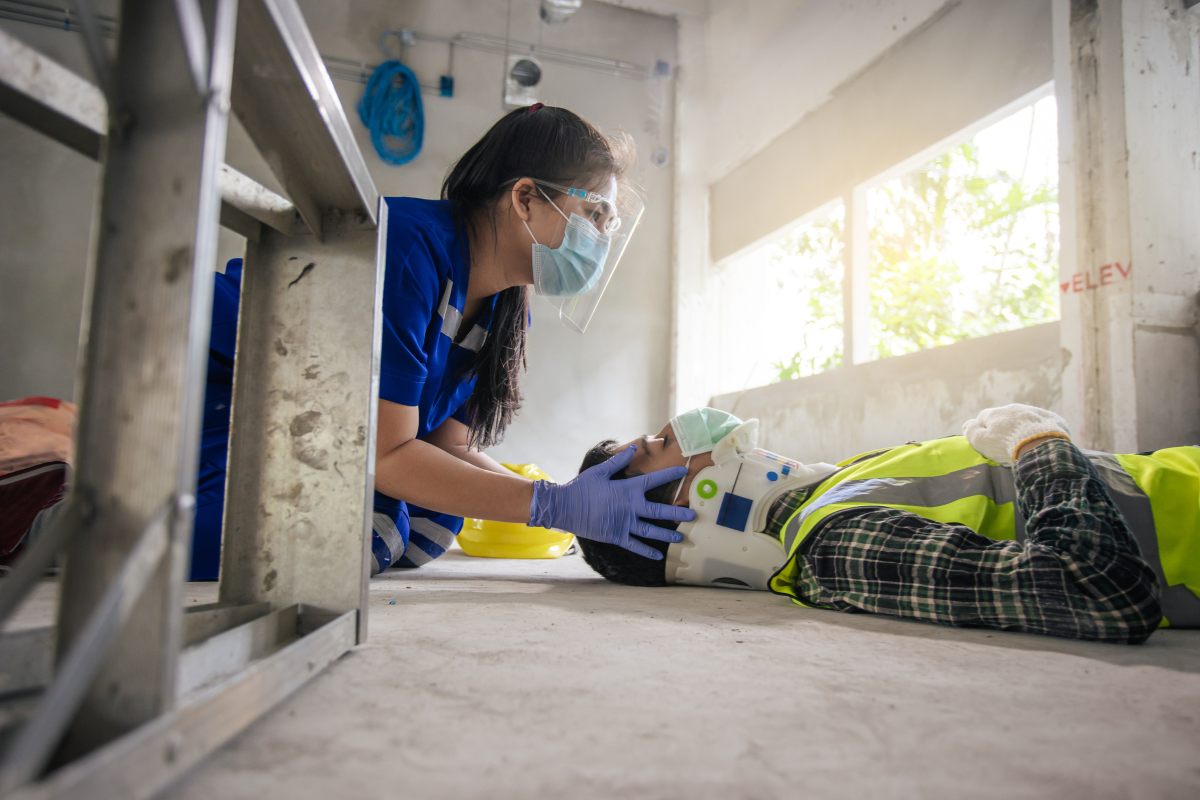Even if you’re lucky enough to love your job, going to work every day can be a pain.
Did you know your workplace can also be full of hidden dangers? From illnesses to accidents, the workplace can be potentially dangerous, but this doesn’t mean you need to quit your job to stay safe; you just need to use some common sense.
To help better inform you, we’re going to provide a comprehensive overview of occupational accidents and illnesses. After all, the more you know, the easier it is for you to stay safe at work.
Post Contents
Common Workplace Injuries
The Occupational Safety and Health Administration, also known as OSHA for short, not only provides guidance for workplace safety, but the organization also creates regulations and tracks injury and illness statistics.

According to OSHA, the rate of injury cases was 2.3 cases per 100 FTE (full-time employees) in 2022, which remains unchanged from 2021.
When it comes to illnesses, the majority of workers reporting falling sick at work stem from respiratory diseases often relating to the COVID-19 virus, and the flu and common colds are closely behind.
You can suffer a workplace injury in any industry, and even the seemingly innocent office can have hidden dangers. Some of the more common workplace injuries include:
- Overexertion
- Same Level Falls
- Struck by Object or Equipment
- Falls to Lower Level
- Bodily Reactions or Other Exertions
- Motorized Vehicle Accidents
- Slip or Trip with No Fall
- Caught or Compressed by Machinery
- Repetitive Motions
- Struck Against an Object
What are the common causes of these workplace injuries? The causes vary depending on the work environment.
For example, office personnel probably aren’t going to sustain injuries from heavy equipment, and construction workers typically aren’t worried about tripping over a small desk trash can.
OSHA publishes an extensive list of the most frequently violated workplace safety standards that often result in injuries, which include:
- Fall Protection
- Hazard Communication Standard
- Scaffolding Requirements
- Respiratory Protection
- Lockout/Tagout Requirements
- Powered Industrial Trucks
These standards typically apply to the construction and general industries. Remember, preventing workplace injuries and accidents requires constant communication among employees and their employers.
How You Can Create A Safer Workplace Environment
By taking a few simple steps and using common sense, employers and their staff can significantly reduce the chances of workplace accidents and injuries:
- Create adequate and immersive safety programs/protocols
- Train employees on proper workplace safety practices
- Ensure safety equipment is widely available and employees understand the usage
- Create schedules to help prevent overexertion
- Follow OSHA guidelines on installing safety railings, guardrails, and warning signs.
- Prevent repetitive motion injuries with the use of ergonomic-designed equipment, which often includes desks, keyboards, floor mats, and more.
If you believe your workplace isn’t following OSHA safety guidelines, you should address your concerns with your supervisor.
If there’s no response or change from the supervisor/manager, you may need to report the violation to OSHA.
You may feel like you’re tattling on your employer, but in reality, you’re taking steps to prevent workplace injuries.
Steps To Take If A Workplace Accident Occurs
If an accident occurs at work, there are some steps you’ll want to take.

These helpful steps can help best preserve the integrity of a worker’s compensation case.
Get Immediate Medical Attention
Immediately following a workplace accident, your first step should be to seek medical attention.
Even minor injuries can turn severe without medical assistance. You’ll also need the medical records to support a worker’s compensation claim.
Report The Accident and Injury to Your Employer
You typically have around one month to report a workplace accident and/or injury to your employer if you plan on filing for compensation.
Your employer can help you fill out and file a worker’s compensation claim and even assist in gathering evidence.
Your employer can also act as a negotiator between you and the employer’s insurance company.
Along with filing deadlines, you don’t want to wait to report a workplace accident. The hazardous conditions may still exist, and this places your co-workers at potential risk.
Document The Accident
Don’t worry about documenting the accident scene if you sustain serious injuries. The most important step is taking care of your health.
Also, if your illness is work-related, it may not be possible to document germs or other types of contamination.
However, if possible, take pictures of the accident scene. For example, if you’re grazed by falling scaffolding, take a picture of the material.
You also want to document your injuries. Sometimes, insurance companies pay more attention to photos than medical files.
If there are any witnesses, get their contact information. You’ll also want to talk to your employer about obtaining copies of any security footage. You may be surprised at what the cameras catch at work.
Don’t Negotiate With The Insurance Company
Even if you love working for your employer, don’t negotiate with the insurance company.
Instead, let your employer handle the negotiations, and then talk to an accident attorney specializing in workplace injuries.
The insurance company will initially provide you and your employer with a low settlement offer. Chances are, this isn’t going to be enough to cover all of your expenses stemming from the accident.
Your employer may be on your side, but they are also concerned with potentially rising insurance costs. This may make them more willing to try to push you into accepting the first offer.
What Is Covered By Worker’s Compensation
Worker’s compensation covers more than just your medical bills. The insurance is designed to protect workers in the event of an accident.
Along with covering medical expenses, worker’s compensation may also take care of costs associated with property damage.
For example, a steel beam falls on your car. Workplace insurance also covers medical expenses stemming from illnesses. If you miss work due to the injury, the insurance can also reimburse you for lost pay.






























